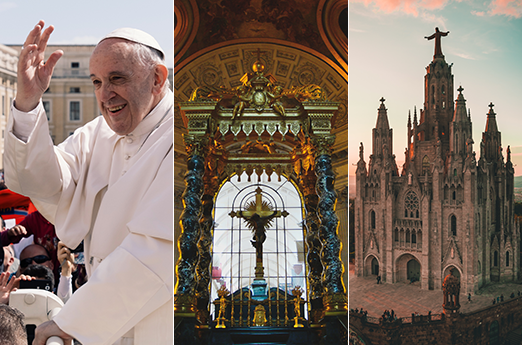Desmond Tutu, Anglican Archbishop Emeritus of Cape Town, who died on December 26, 2021, marked a milestone in the history of the ecumenical “Church’s struggle” against theapartheid in South Africa[1]. An era that began more or less in the late 1950s, gained momentum in the 1960s and culminated in the exciting days of the 1980s when a broad coalition of community associations took shape , trade unions and religious organisations, operating alongside established liberation movements such as the African National Congress (ANC), the Pan African Congress (PAC) and the South African Communist Party (SACP). Eventually, this joint action forced the National Party government to negotiate a transition to democracy, which was achieved in 1994.
Some key figures from that era have now disappeared, such as Denis Hurley, the Catholic Archbishop of Durban, and the Dutch Reformed theologian CF Beyers Naudé; others, like Pastor Allan Boesak and Dominican Albert Nolan, are now or nearly retired. In particular, the period in which the Christian churches took a common and principled position, working together with people of all faiths, or agnostics, and helped bring down a bad regime to create a democratic state, now belongs to the past.
Desmond Tutu was one of the key figures[2], and he played a fundamental role, because in many respects his convictions and his personality crossed Protestant and Catholic denominational boundaries between traditional theology and liberation theology, between revolutionary commitment and the spirit of reconciliation. Revolution and reconciliation were rooted in his theology (Biblical, Anglican, Black and African), which in turn was rooted in the spirituality that was the fruit of his extraordinary life. This article, in the form of a short biography, will try to explore the links between these aspects and the life of Tutu[3].
This article is reserved for paid subscribers. Please subscribe to continue reading this article
Subscribe

welcome to
La Civilta Cattolica!
This article is for paying subscribers only.
Please login or subscribe to continue reading this article

[1] See JW de Gruchy – S. de Gruchy, The Church Struggle in South Africa, London, SCM, 2005; C. Villa-Vicencio, Trapped in Apartheid, Maryknoll, Orbis Books, 1988; P.Walshe, Prophetic Christianity and the Liberation Movement in South AfricaPietermaritzburg, Cluster Publications, 1995.
[2] Among the biographies of Tutu, Cf. S. Du Boulay, Tutu: Voice of the Voiceless, London, Penguin, 1989; J. Allen, Rabble-Rouser for Peace: The Authorized Biography of Desmond Tutu, London, Rider, 2006; SD Gish, Desmond Tutu: A BiographyWestport, Greenwood Press, 2004.
[3] Parts of this article were published in the Jesuit journal America : Cf. A. Egan, “A South African Jesuit remembers Archbishop Desmond Tutu”, America : www.americamagazine.org/politics-society/2021/12/27/desmond-tutu-jesuit-catholic-242126), December 27, 2021.
[4] Cf. A. Wilkinson, The Community of the Resurrection: A Centenary HistoryLondon, SCM, 1992.
[5] We have no hesitation in using terms that Tutu, Huddleston and the Resurrection Fellowship would use.
[6] See, in particular, S. Du Boulay, op. quote., 60.
[7] Cf. P. Denis – G. Duncan, The Native School that Caused All the Trouble: A History of the Federal Theological Seminary of Southern AfricaPietermaritzburg, Cluster Publications, 2011.
[8] See S. Biko, I Write What I LikeChicago, University of Chicago Press, 2002.
[9] Self-denomination of a community made up of several million people of mixed origins: European, Asian and African.
[10] “Open Letter to Mr. John Vorster (6 May 1976)”, in: D. Tutu, Hope and Suffering: Sermons and SpeechesGrand Rapids, WB Eerdmans, 1984, 28-36.
[11] D. Tutu, “Steve Biko – A Tribute”, in: Id., Crying in the Wilderness: The Struggle for Justice in South AfricaGrand Rapids, WB Eerdmans, 1982, 62 sec.
[12] See JW de Gruchy – S. de Gruchy, op. cit. ; P.Walshe, op. cit.
[13] For a comparison between SACC and SACBC, cf. TA Borer, Challenging the State: Churches as Political Actors in South Africa, 1980-1994Notre Dame, University of Notre Dame Press, 1998.
[14] D. Tutu, “In Defense of the SACC”, in: Id., Crying in the Wilderness51 sec.
[15] ID., Discorso per l’assegnazione del premio Nobel per la pace11 December 1984: www.nobelprize.org/prizes/peace/1984/tutu/lecture.
[16] PB Hinchliff, The Anglican Church in South Africa: An Account of the History and Development of the Church of the Province of South AfricaDarton, Longman & Todd, 1963.
[17] Cf. A. Cowell, “Bishop Tutu Saves Man from Crowd”, in: The New York Times (www.nytimes.com/1985/07/11/world/bishop-tutu-saves-man-from-crowd.html), July 11, 1985. The “necklace of fire” was a torture that involved passing a tire over a person’s head and around a person’s arms and then setting it on fire.
[18] See Truth and Reconciliation Commission of South Africa, Report of the Truth and Reconciliation Commission, 7 flights, Cape Town, Juta & Co, 1998; E. Doxtader – C. Villa-Vicencio (eds), To Repair the Irreparable: Reparation and Reconstruction in South Africa, Cape Town, David Philip, 2004; C. Villa-Vicencio – W. Verwoerd (eds), Looking Back, Reaching Forward: Reflections on the Truth and Reconciliation Commission of South AfricaCape Town, University of Cape Town Press, 2000.
[19] See D. Tutu, No Future Without ForgivenessNew York, Doubleday, 1999 (in Italian. Non c’è futuro senza perdonoMilano, Feltrinelli, 2001).
[20] Ibid.265.
[21] D. Tutu – Mr. Tutu, Made for Goodness: And why this makes all the differenceLondon, Rider, 2012.
[22] See J. Habgood, The Concept of NatureDarton, Longman & Todd, 2002.
[23] D.Tutu, No Future Without Forgiveness267.

